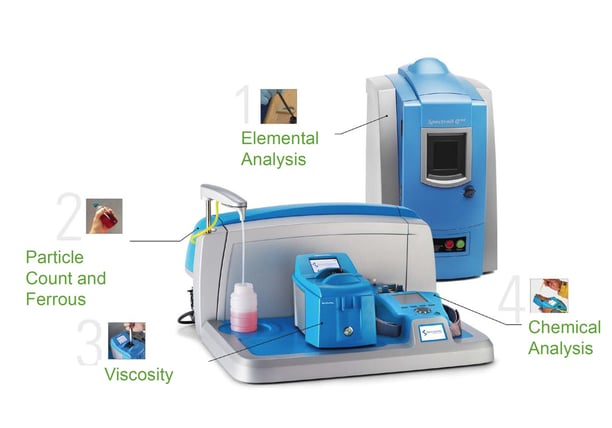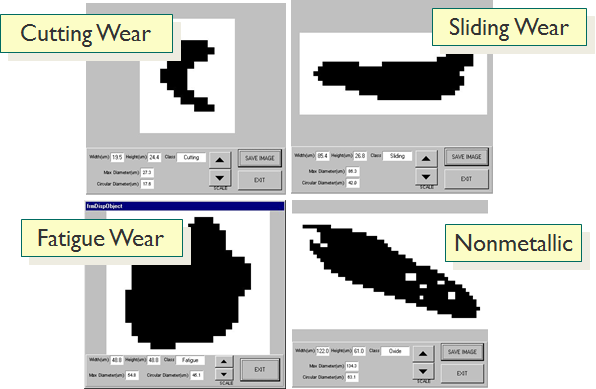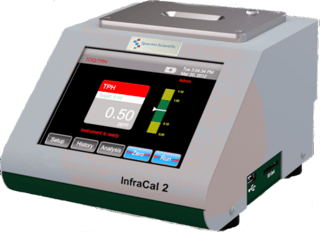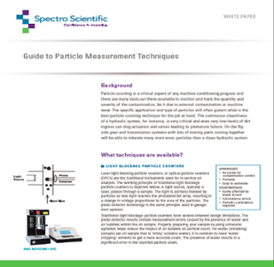Comprehensive Oil Analysis Solutions for Industrial Machinery
The MiniLab combines four simple tests that take less than 20 minutes to complete
Oil analysis provides early indications of equipment wear and identifies the root causes of corrosion. On-site oil analysis eliminates the wait associated with sending samples off-site and enables immediate decision making.
With four simple tests, the MiniLab 153 delivers comprehensive on-site oil analysis, providing immediate actionable results, saving time and reducing costs. Highlights of this system include:
- One product, delivering lab-quality analysis outside of the lab
- Simplified workflow for the non-expert user, no chemist required
- Simplified data handling and report interpretation via OilView and Trivector reporting

1. Elemental Analysis
The Spectroil Q100 analyzes small particulate wear, lubricant additives and contaminants for trace quantities of elements dissolved or suspended as fine particles. Using the proven rotating disc electrode (RDE) technique, the Spectroil Q100 is has become the workhorse of industrial, commercial and military oil analysis laboratories requiring rapid analysis of wear metals, contaminants and additives in lubricants. Coolant, wash-down water and JOAP calibrations are available in addition to in-service lubricating oil and hydraulic fluid analysis.
- Measures ppm levels of up to 32 elements in less than 30 seconds
- Easy to operate – no sample preparation, gases, coolants, or solvents needed
- Compliant with ASTM D6595 for used oil analysis
2. Particle Count and Ferrous Monitor
The LNF Q200 Series provides particle counts and codes, large wear particle classification and ferrous wear monitoring.
- Particle count, size distribution and codes (ISO 4406, NAS 1638, NAVAIR 01-1A-17, SAE AS 4059, GOST, ASTM D6786, HAL, and user defined bins).
- Differentiates contaminants (silica and fibers from machine wear metal)
- Classifies wear particles, stores images, and reports particle count and size distribution for each wear type of Cutting, Sliding, Fatigue, Fibers and Non-metallics
- Ferrous Monitor measures total ferrous content in the sample and provides Ferrous particle count and size distribution
- Widest range up to 5,000,000 particles/ml
- Test oil with a viscosity up to ISO320 without dilution
- Images through dark fluids containing up to 2% soot
- Error corrections for water and air bubbles
3. Viscosity
The SpectroVisc Q3050 provides fast, accurate 40C kinematic viscosity measurements for easy detection of viscosity variations caused by contamination, mix-up and oil degradation.
- Solvent free, portable, and easy to use
- Viscosity range 1-700 cSt @40C
- Accuracy +/- 3% to NIST viscosity standards
- Fast results - ISO 15 ~10 seconds, ISO 320 ~ 3 minutes
4. Chemical Analysis
The FluidScan® 1100 determines when in-service oil is no longer fit for use due to oil degradation or the ingress of water or glycol. It is fast and easy to use, with just one drop of oil needed for the sample and less than one minute for test results. The analyzer includes an extensive oil library; additional oils can be added by the user.
- Compliant to ASTM D7889 “Standard Test Method for Field Determination of In-service Fluid Properties Using IR Spectroscopy”
- High correlation to TAN and TBN laboratory tests conducted with ASTM D664 and D4739
- Comprehensive Water Measurement option extends range to 6.5%. (Included with all Minilab systems.)
For more information please download our Industrial Solutions Brochure.
Free E-guide on Particle Measurement
What are the most common methods for measuring particles in lubrication oil?
Particle counting is a critical aspect of any machine conditioning program and there are many tools out there available to monitor and track the quantity and severity of the contamination, be it due to external contamination or machine wear. The specific application and type of particles will often govern what is the best particle counting technique for the job at hand. The continuous cleanliness of a hydraulic system, for instance, is very critical and even very low levels of dirt ingress can clog actuators and valves leading to premature failure. On the flip side gear and transmission systems with lots of moving parts coming together will be able to tolerate many more wear particles than a clean hydraulic system.

The three most common particle counting techniques are light blockage, pore blockage, and directing imaging.
Light Blockage
Laser light blocking particle counters, or optical particle counters (OPC’s) are the traditional instruments used for in-service oil analysis. A light source, typically a laser, passes through a sample. The light is partially blocked by particles so less light reaches the photodetector array, resulting in a change in voltage proportional to the area of the particles.
Pore Blockage
Pore blockage particle counters are used as on-site particle counters for in-service machinery oils. They employ a fine mesh whereby particulate accumulates on the mesh. These particle counters are based upon either a constant flow or constant pressure design. Constant flow instruments measure the pressure drop across the mesh while holding flow constant. The constant pressure designs measure the change in flow rate while holding the pressure constant.
Direct Imaging
Direct imaging systems incorporate a solid-state laser configured with a CCD array to create a direct imaging particle counter. The laser illuminates the sample, and an optical lens magnifies the laser light. A CCD video camera captures the images of the sample and stores them in memory. These images are analyzed for size and shape. An equivalent circular diameter or ECD is calculated for each image and particle count and size distribution is reported along with ISO codes.
To learn more about particle measuremen techniques, please read our E-guide.
ASTM Standard D8004 for In-service Lubricant Analysis
An interview with Dr. Patrick Henning
Dr. Patrick Henning, of Spectro Scientific, has worked on the analysis of fuels and lubricants for more than a decade and has been part of the ASTM Standards Committee since 2010. AZoM spoke to Dr. Henning about new standards for testing fuel dilution and how Spectro Scientific's Q6000 Fuel Dilution Meter can be used to adhere to them.

SM: What positions have you held or currently hold with the ASTM Standards Committee?
PH: I was the Co Vice-Chairman of ASTM Committee D02.96 on In-Service Lubricant Testing and Condition Monitoring Services from 2010-2015.
I currently serve as Co-chair of D02.96.03 and D02.96.07 subcommittees on FTIR and Integrated Testers, Instrumentation Techniques for In-Service Lubricants.
SM: Can you tell us why the new standard D8004 from ASTM International was developed?
PH: Whenever Spectro Scientific launches a new product that has market acceptance, there is a natural need to seek a standard as validation that the technology has been assessed via an independent standards organization.
For the Q6000 Fuel Dilution Meter, it was no different. Users need to be sure that an independent voluntary consensus organization has vetted the technology and it meets performance and safety standards. In the fall of 2015, we learned that ASTM International established standard test method D8004, which certifies the analysis provided by the Q6000 fuel dilution meter.
To read the complete interview click here.
Guide to Measuring Oil in Water
Learn the techniques available to measure TOG/TPH and FOG

Oil in water analysis is a global issue that crosses many industries, analytical methods, and regulatory agencies. Due to the negative effects of oil on the environment, there are strict limits on the amounts of oil allowed in water. Failure to meet these limits can lead to heavy fines. While any industry that discharges produced water needs to test for oil in water, their specific needs can differ from industry to industry. The petroleum industry is most concerned with measuring Total Oils and Grease (TOG) in both their upstream and downstream wastewater. For industrial pretreatment of wastewater, public water treatment plants, and most other nonpetroleum industries discharging produced water, it is most important to test for Fats, Oils and Grease (FOG) in their effluent. FOG differs from TOG in that it tends to contain large amounts of animal and vegetable components in the oil. FOG can be especially concerning in effluent streams because it can lead to clogged sewer lines which causes Sanitary Sewer Overflows (SSOs).
The people responsible for conducting oil in water measurements understand that the measurement can be quite challenging. Wastewater from different sources can contain many different types of hydrocarbons, each with different chemical make-ups. On top of the lack of chemical uniformity in different oils, there has been a large variety of methods developed to quantify the oil in the wastewater. While none of the following methods is perfect, each will have its own advantages and disadvantages for oil in water analysis.
To download your free E-guide please click here.







